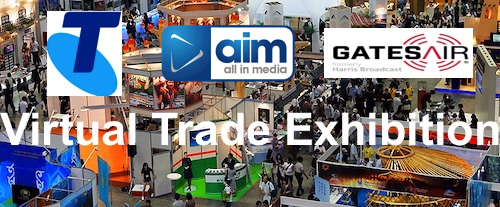Day two of the recently concluded ABU DBS 2021 featured a session on Technologies and Strategies for Successful Digital Radio Rollout moderated by Steve Ahern, Head of ABU Media Academy.
One of the topics discussed in this session was Smart strategies for DAB+ Smart Radio, presented by Dr Les Sabel, Chair, WorldDAB Asia Pacific Technical Group, and S-Comm Technologies WorldDAB.
Les has over 30 years of experience in communications systems, including broadcast digital radio (DAB/DAB+ and DRM), mobile communications, wireless broadband and satellite communications.
Les began by explaining what is DAB+ Smart radio – It uses digital broadcasting coupled with IP connectivity to deliver advanced features, it is basically hybrid radio. In general, it offers more information and functionality including emergency warnings.
Leading automotive manufacturers are now actively engaged in developing Smart radio. One of the main reasons for this is it offers large, hi-resolution interfaces. However, the home and portable units are lagging behind a bit in some of the more advanced features.
The benefits of smart radio include high quality audio, text, images, advanced features like service linking, announcements and emergency warnings delivered in a one-to-many broadcast, making it cost effective and green.
Broadcasters can get more engagement, ClientID – allowing advanced features for preferred suppliers, geolocation, interactivity, analytics to measure audience preferences and tagging.
Existing DAB+ standards already support hybrid functionality for DAB+ smart radio. But strategies for implementation of DAB+ Smart radio depend on the current capabilities of the radio industry in each country. There are new markets without existing DAB infrastructure, which should plan to include hybrid radio delivery along with DAB+ rollout to minimise the cost of implementation. In existing markets, stations can augment existing DAB infrastructure with hybrid capabilities.
He highlighted the need to have DAB+ as the heart of hybrid radio, which can help extract metadata and deliver it to the receiver at a small incremental cost.
Broadcasters need to make strategic decisions on partnering with service providers based on the services that will be delivered to listeners and broadcasters, number of listeners offered by the service provider via supported vehicle brands, progress on standardising various aspects of hybrid/smart radio functionality, cost/benefits of moving the standardised methods in the future.
As great progress has been made on DAB+ radio over the last decade and new features and capabilities are constantly being developed, there are two areas which require attention.
First is home receivers, because the emergence of screen-based radio products primarily focused on IP streaming will open the door to smart DAB+ radio for home markets. DAB+ modules can be added to such products for only a few dollars.
The second area to focus on is broadcaster information consistency. Currently, different service providers use different systems to extract and deliver IP based services. As a result, the sourcing of programme associated image, delivery of links and other metadata and the provision of other advanced featured varies. Ideally the broadcaster should be able to provide a single source of all data so the service provider can deliver and render the information in their preferred manner.
“Smart radio will be essential in the future of radio, hybrid radio functionality continues to evolve but baseline technology is already in use, so planning DAB+ radio with hybrid capability is the way forward,” he concluded.
Subscribe to the radioinfo podcast on these platforms: Acast, Apple iTunes Podcasts, Podtail, Spotify, Google Podcasts, TuneIn, or wherever you get your podcasts.


